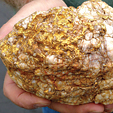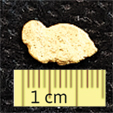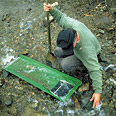All Articles
Legislative and Regulatory Update
October 2000 by Scott Harn
• Bush probably could take back monuments. But would he? .Salt Lake City, UT (AP)-George W. Bush might be able to undo some of the West's new national monuments if elected president, according to a public land law expert, but it is unclear what the political aftershocks would be.
GOP vice presidential candidate Dick Cheney said a Bush administration would review and possibly rescind some of the national monuments President Bill Clinton has created.
George Coggins, a professor at the University of Kansas School of Law, said it would probably be possible to annul some of the monuments.
"The law gives the president the power to withdraw and reserve lands as national monuments," Coggins said. "It doesn't say anything about the power to 'de-withdraw' an area, but it is likely that would be implicit in the law."
In fact, 10 national monuments were eliminated between 1930 and 1994, according to the National Park Service. Those lands—which included an area with abundant cactus in southern Arizona, caves in Montana and Wyoming, and human artifacts in New York and Colorado—were transferred by Congressional action to either a state or another federal agency, such as the U.S.F.S. or the B.L.M.
Under the 1906 Antiquities Act, a president can create national monuments protecting areas of historic or scientific importance by simply signing a decree. Since taking office, Clinton has used the act to create or add to 10 national monuments covering nearly 4 million Western acres.
Some—including Utah's 1.7 million-acre Grand Staircase-Escalante National Monument, which Clinton set aside in 1996—have angered residents and local politicians.
"There may finally be enough disgust with the way these things are being done to take a look at whether these monuments really meet the standards of the Antiquities Act," said Mark O. Walsh, associate director of the Utah Assoc. of Counties.
Walsh said it would be "awfully difficult to undo" Grand Staircase-Escalante, but said Bush might trim back some of the boundaries to exclude areas with thick deposits of coal. A future president could also order federal managers to pay closer attention to the needs of nearby communities when deciding how the monument will be managed.
• Oregon Group Needs Your Help
Another monument proposal is sitting on Babbitt's desk. This proposal may put over one-million acres of southwest Oregon off-limits to mining, grazing, farming, off-road vehicles, recreational and commercial use of federal land. The "Siskiyou Wild Rivers National Monument" is being promoted by the World Wildlife Fund, the Audubon Society, the Sierra Club and the Wilderness Society, in brochures distributed by the Siskiyou Project.
Jim Nolan and Ron Smith started a local chapter of People for the USA to help fight the project and they need your help.
Jim Nolan,
V.P. PFUSA-ORCA
PMB 134
PO Box 1459
Cave Junction, OR 97523
(541) 592-6004
• Critical Habitat Proposed for California Red-legged Frog
The U.S. Fish and Wildlife Service proposed to designate 5.4 million acres as critical habitat for the threatened California red-legged frog.
The designation was deemed to be unnecessary as recently as 1996. In March 1999, the Earthjustice Legal Defense Fund, on behalf of the Jumping Frog Research Institute, the Southwest Center for Biological Diversity and the Center for Sierra Nevada Conservation, filed a lawsuit in the Northern California District Court against the Service and the Secretary of the Interior for failure to designate critical habitat for the California red-legged frog. In December 1999, the Court ordered the Service to propose critical habitat for the species by August 31, 2000 and to issue a final rule by December 29, 2000.
The government report states, " ... the California red-legged frog is found primarily in coastal drainages of central California. Monterey, San Luis Obispo and Santa Barbara counties support the greatest amount of currently occupied habitat." The report also states that the red-legged frog has been confirmed to be in only "four areas," yet there are 31 counties they want to regulate as part of this proposed critical habitat designation. The stated goal is, " ... protecting existing populations by reducing threats; restoring and creating habitat that will be protected and managed in perpetuity; surveying and monitoring populations and conducting research on the biology of, and threats to, the species; and re-establishing populations of the species within the historic range."
Copies of the proposal are available from the Sacramento Fish and Wildlife Office at the address below. The proposal is also available online at http://www.rl.fws.gov under the category of "News Releases." Comments are due by October 11, 2000, and need to be submitted to the Field Supervisor, Sacramento Fish and Wildlife Office, 2800 Cottage Way, W-2605, Sacramento, California 95825.

Detecting the Fringe Areas
 One prime example is an area that I have talked about in many of my articles. This is a very large area and I will actually describe its location again.
One prime example is an area that I have talked about in many of my articles. This is a very large area and I will actually describe its location again.
Sluicing and Detecting Downstream
 …early last fall, I found my first gold-rich patch along a few crevices in the same river and found five grams of gold nuggets in one outing.
…early last fall, I found my first gold-rich patch along a few crevices in the same river and found five grams of gold nuggets in one outing.
Groups Wonder Meaning of Call for More Wilderness
U.S. Forest Service Chief Michael Dombeck says there ought to be more wilderness—a comment that raised some concerns.
Sluicing on Bedrock
 My head nearly scraped the caribou horns that hung above the doorway of the old tarpaper cabin I would call home for a few days. The cabin was originally built in the early 1930s and had been dragged about 200 yards across the valley to...
My head nearly scraped the caribou horns that hung above the doorway of the old tarpaper cabin I would call home for a few days. The cabin was originally built in the early 1930s and had been dragged about 200 yards across the valley to...
Ask The Experts: Could you expand on your previous blasting article?
Q: Could you write more about the last two methods that you mentioned—the expanding chemical mixtures and the micro blasters, how and when to use them, and when not to use them?
Mining Stock Quotes, Mineral & Metal Prices
Subscription Required:
The Bawl Mill
• A Word from the Editor
• Under the Guise of Environmental Protection—EPA Revealed
• The Centennial Lode and the Centennial Ridge District, Wyoming
• Company Notes
• Picks & Pans—In Search of Nome Creek Gold
• Massive Sulfide Deposits in Oregon
• Recreational Dredging on the South Yuba River
• The Trapiches of Chile
• Tales of Liberty Gold
• Drywashing Alluvial Placers
• Melman on Gold & Silver
• Mining Stock Quotes and Mineral & Metal Prices
Free:









